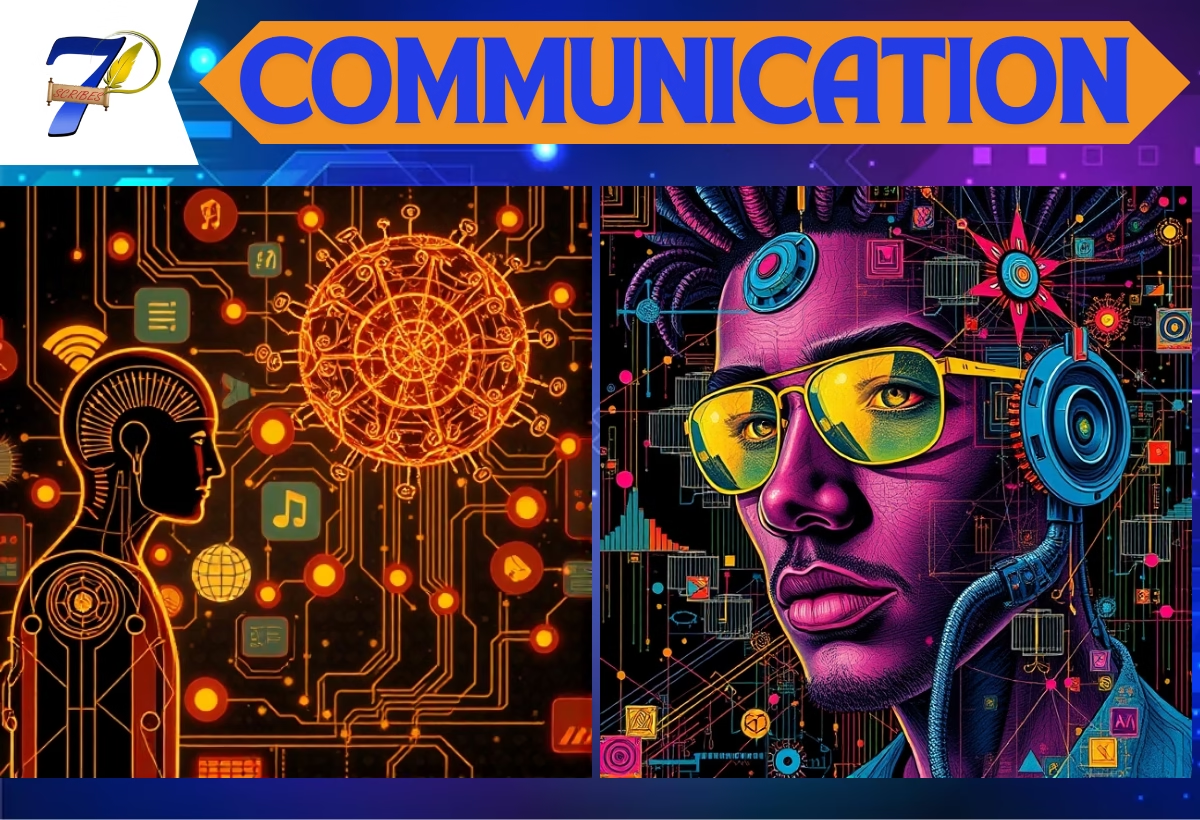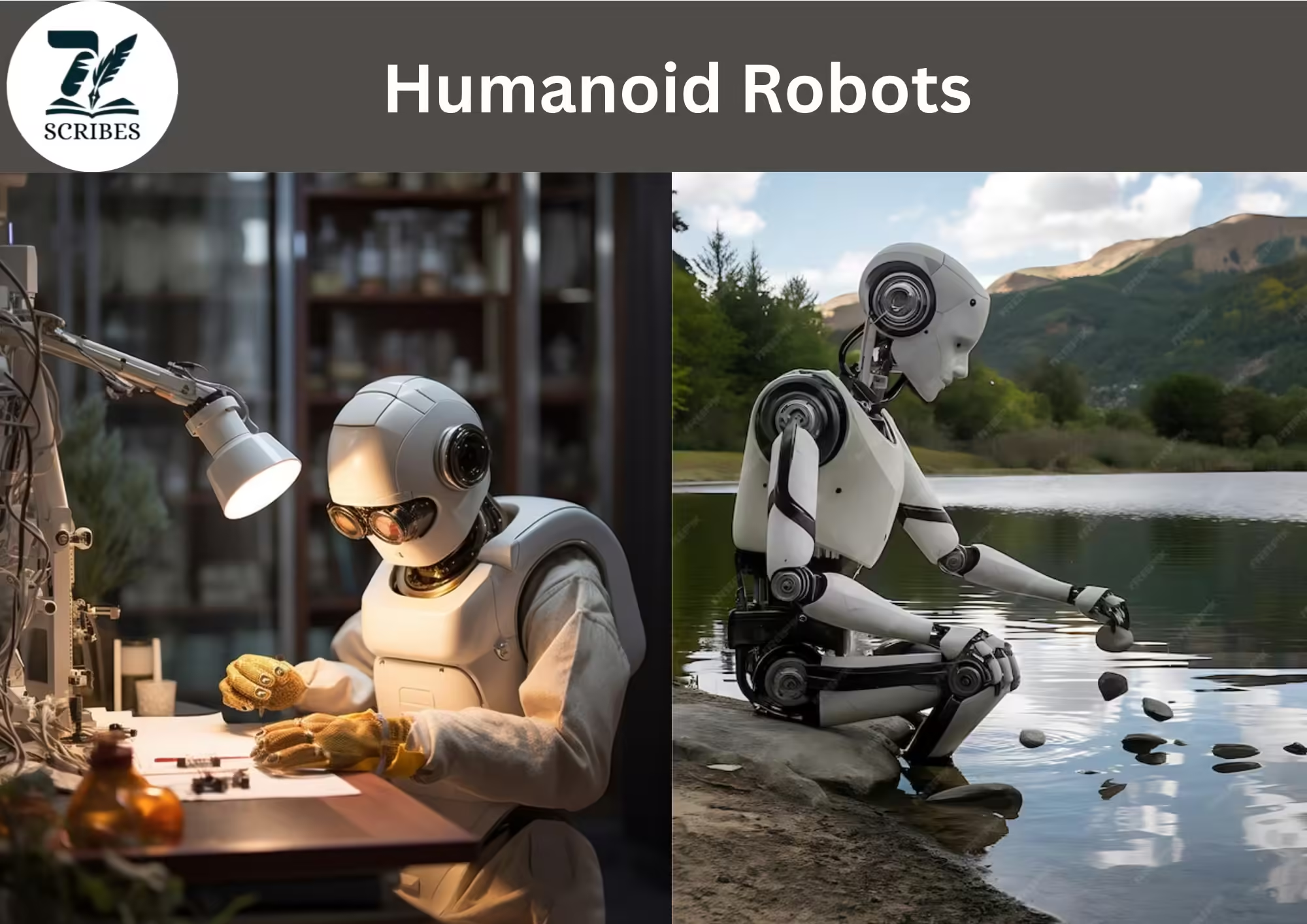-
The Telephone (1876)
In 1876, Alexander Graham Bell invented the telephone, which further transformed communication. This device allowed people to talk directly with one another, eliminating the means of intermediates like the Telegraph operator. After a short time, it became an essential part of human life.
-
The Radio (1895)
In the 20th century, Guglielmo Marconi developed a radio that enabled wireless communication. By the 1920s, radio stations were broadcasting news, entertainment, and music to the public, shaping culture and politics.
The Digital Revolution
The modern era of communication history began with the internet, compressing millennia of progress into decades.
1. The Internet (1960s-present)
The first Internet was developed for the military in the 1960s, but it became accessible in the 1990s. The internet allows for the instant transmission of data, enabling a wide range of communication tools, from email to video conferencing. It changes the individual life, business, education, and social interactions.
2. Social Media (2000s-present):
Platforms like Facebook, Twitter, and Instagram have become dominant forms of communication, allowing people to share information and connect globally.
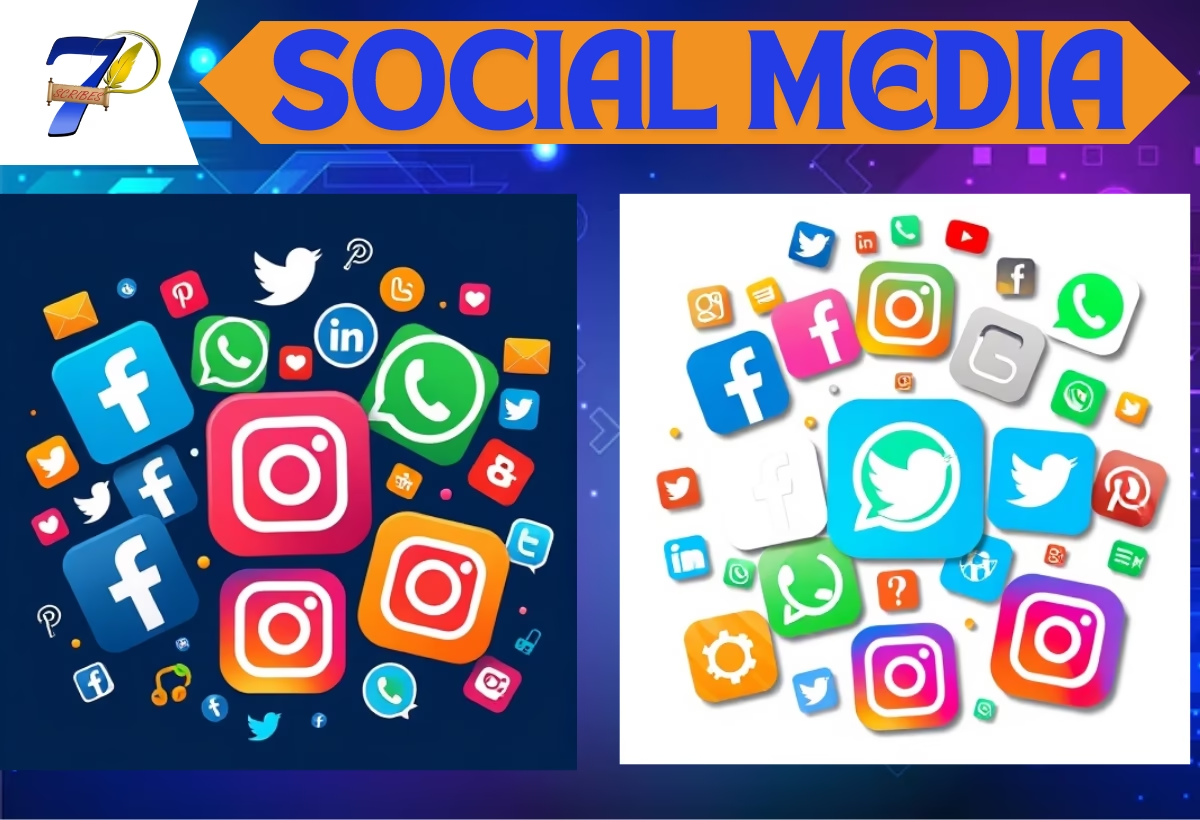
3. Mobile Communication
The rise of mobile phones, particularly smartphones, has made communication more accessible and convenient. Smartphones combine calling, texting, and internet access, making them essential tools for modern communication. With apps like WhatsApp and Zoom, mobile devices enable instant messaging, voice calls, and video conferencing, fostering global connectivity.
Conclusion: Communication in the 21st Century
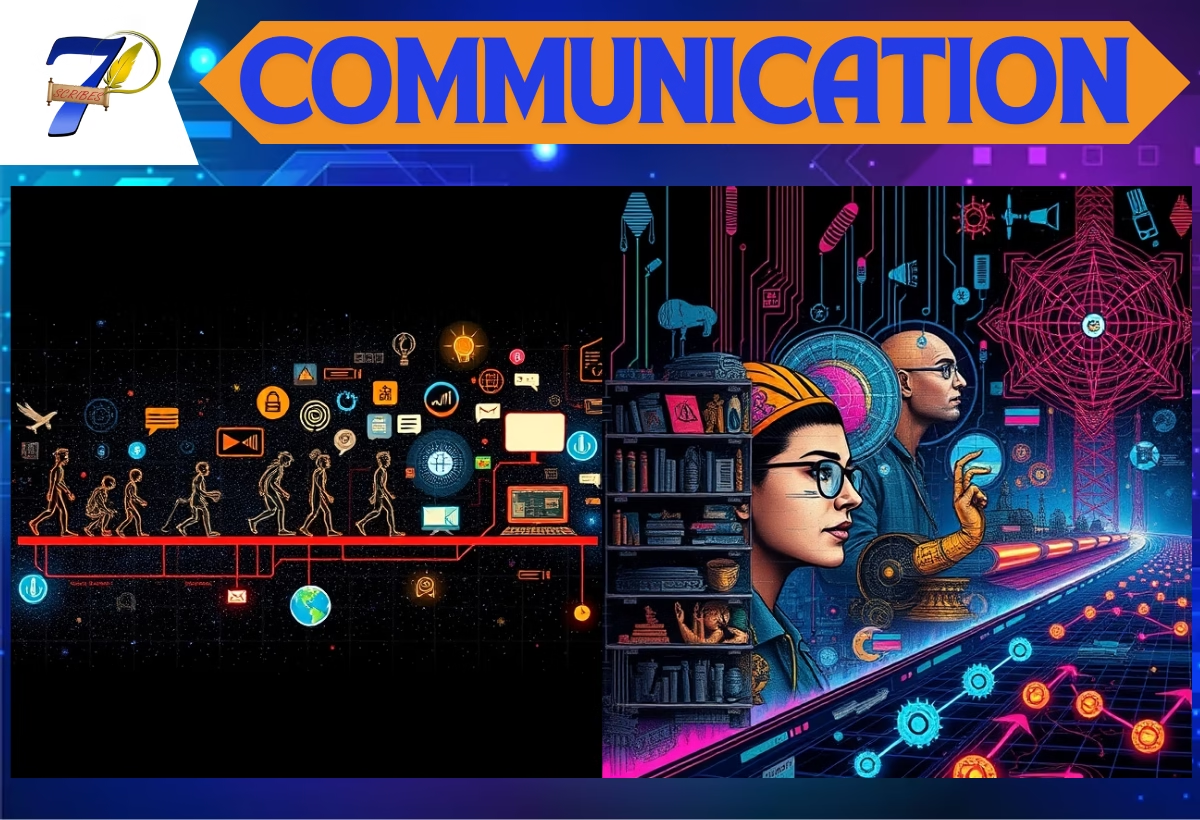
This history of communication is a story of continual innovation. From primitive symbols to advanced digital networks, humans have developed increasingly different ways to share information. Each step in communication technology—from the printing press to the internet—has reshaped society profoundly. Today’s world is a global village; everyone from everywhere can communicate with anyone with the help of the internet. Also today we enter the era of artificial intelligence, virtual reality, and even quantum communication. The evolution of communication is far from over. Communication allows humans to interact and drives and fortifies economic growth, scientific development, bilateral relations between states, and cultural exchange.
Read More:
-
The Telegraph (1837):
In the 19th century, it emerged raised a new chapter in communication history. The telephone was invented by Samuel Morse. This device used Morse code to send messages over long distances via electrical signals. The Telegraph played a critical role in commerce, military communication, and journalism.
It facilitates not only sending long messages but also allows improvement in globalization, trade, military, and scientific research.
-
The Telephone (1876)
In 1876, Alexander Graham Bell invented the telephone, which further transformed communication. This device allowed people to talk directly with one another, eliminating the means of intermediates like the Telegraph operator. After a short time, it became an essential part of human life.
-
The Radio (1895)
In the 20th century, Guglielmo Marconi developed a radio that enabled wireless communication. By the 1920s, radio stations were broadcasting news, entertainment, and music to the public, shaping culture and politics.
The Digital Revolution
The modern era of communication history began with the internet, compressing millennia of progress into decades.
1. The Internet (1960s-present)
The first Internet was developed for the military in the 1960s, but it became accessible in the 1990s. The internet allows for the instant transmission of data, enabling a wide range of communication tools, from email to video conferencing. It changes the individual life, business, education, and social interactions.
2. Social Media (2000s-present):
Platforms like Facebook, Twitter, and Instagram have become dominant forms of communication, allowing people to share information and connect globally.

3. Mobile Communication
The rise of mobile phones, particularly smartphones, has made communication more accessible and convenient. Smartphones combine calling, texting, and internet access, making them essential tools for modern communication. With apps like WhatsApp and Zoom, mobile devices enable instant messaging, voice calls, and video conferencing, fostering global connectivity.
Conclusion: Communication in the 21st Century

This history of communication is a story of continual innovation. From primitive symbols to advanced digital networks, humans have developed increasingly different ways to share information. Each step in communication technology—from the printing press to the internet—has reshaped society profoundly. Today’s world is a global village; everyone from everywhere can communicate with anyone with the help of the internet. Also today we enter the era of artificial intelligence, virtual reality, and even quantum communication. The evolution of communication is far from over. Communication allows humans to interact and drives and fortifies economic growth, scientific development, bilateral relations between states, and cultural exchange.
Read More:
-
Greek and Roman Contributions
The Greeks and Romans made a significant contribution to communication history. The Greeks used their alphabets to store records of philosophical works, historical texts, and literature. Like Greeks, Romans also used Latin to document laws, political treaties, and scholarly works, some of which are still in use today.
The Greeks also contributed to the development of mass communication, particularly through the use of rhetoric and oration.
-
Manuscripts and Scrolls
In ancient and medieval times, manuscripts and scrooges became important mediums for storing information and knowledge. Monks in medieval Europe painstakingly copid religious and philosophical texts by hand, storing much of what we know about ancient civilizations.
-
The Messenger Systems:
Communication over long distances remains slow and labor-intensive throughout ancient and medieval history. The Romans and Persian Empires developed messenger systems to carry messages across vast distances. This allowed empires to quickly share messages across long distances and also maintain control over their territories.
The Printing Revolution: Gutenberg’s Printing Press

Invention of the Printing Press (1440)
No invention changed the history of communication more than Gutenberg’s press in 1440. This machine allows the mass production of pamphlets, books, and other written materials. It revolutionized the way of exchanging information through writing, making it more accessible than ever before. Gutenberg’s invention is often credited with sparking the Renaissance, Reformation, and the Scientific Revolution, as it allowed knowledge to spread rapidly across Europe.
The most positive impact of these devices is that they made books affordable, leading to an increase in literacy rates across Europe. The ability to mass-produce written works helped disseminate new ideas in science, politics, and religion
The Age of Telecommunications:
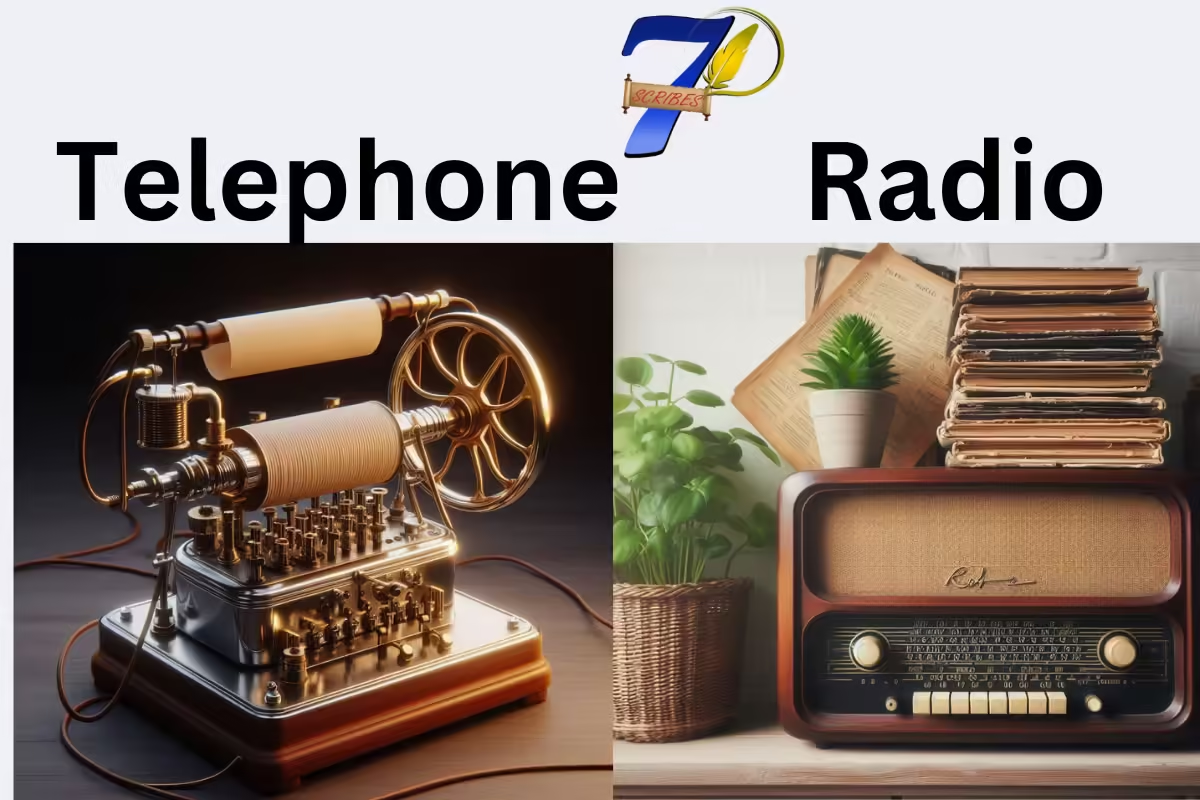
The next evolution in communication revolutionized the entire communication system. It cuts the distances, meaning allowing distance messages in a short time.
-
The Telegraph (1837):
In the 19th century, it emerged raised a new chapter in communication history. The telephone was invented by Samuel Morse. This device used Morse code to send messages over long distances via electrical signals. The Telegraph played a critical role in commerce, military communication, and journalism.
It facilitates not only sending long messages but also allows improvement in globalization, trade, military, and scientific research.
-
The Telephone (1876)
In 1876, Alexander Graham Bell invented the telephone, which further transformed communication. This device allowed people to talk directly with one another, eliminating the means of intermediates like the Telegraph operator. After a short time, it became an essential part of human life.
-
The Radio (1895)
In the 20th century, Guglielmo Marconi developed a radio that enabled wireless communication. By the 1920s, radio stations were broadcasting news, entertainment, and music to the public, shaping culture and politics.
The Digital Revolution
The modern era of communication history began with the internet, compressing millennia of progress into decades.
1. The Internet (1960s-present)
The first Internet was developed for the military in the 1960s, but it became accessible in the 1990s. The internet allows for the instant transmission of data, enabling a wide range of communication tools, from email to video conferencing. It changes the individual life, business, education, and social interactions.
2. Social Media (2000s-present):
Platforms like Facebook, Twitter, and Instagram have become dominant forms of communication, allowing people to share information and connect globally.

3. Mobile Communication
The rise of mobile phones, particularly smartphones, has made communication more accessible and convenient. Smartphones combine calling, texting, and internet access, making them essential tools for modern communication. With apps like WhatsApp and Zoom, mobile devices enable instant messaging, voice calls, and video conferencing, fostering global connectivity.
Conclusion: Communication in the 21st Century

This history of communication is a story of continual innovation. From primitive symbols to advanced digital networks, humans have developed increasingly different ways to share information. Each step in communication technology—from the printing press to the internet—has reshaped society profoundly. Today’s world is a global village; everyone from everywhere can communicate with anyone with the help of the internet. Also today we enter the era of artificial intelligence, virtual reality, and even quantum communication. The evolution of communication is far from over. Communication allows humans to interact and drives and fortifies economic growth, scientific development, bilateral relations between states, and cultural exchange.
Read More:
Understanding the history of communication allows us to appreciate the complexity of human interactions and the importance of innovation in connecting people across time and space. From the first cave paintings to the modern internet, the history of communication has always been at the heart of human progress.
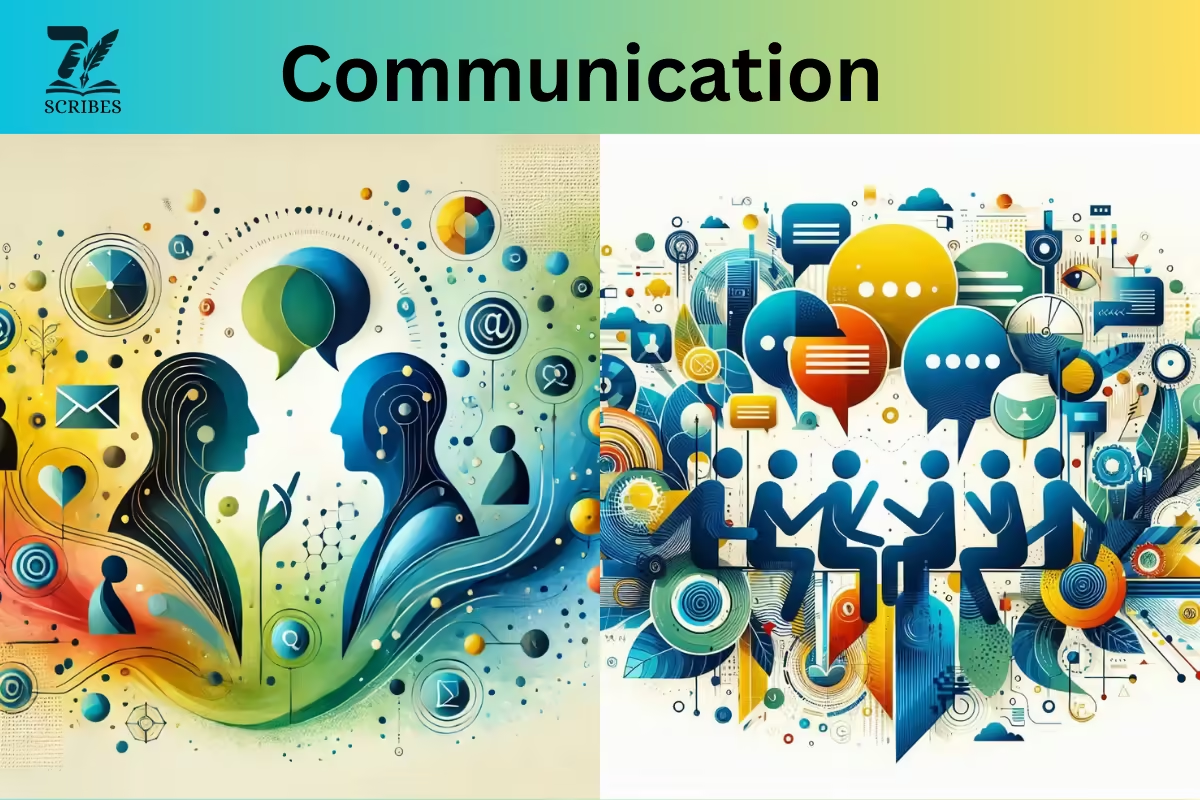
Communication involves sharing ideas, thoughts, emotions, information, and knowledge. It plays a crucial role in running daily life activities. That’s why it is the cornerstone of societal development. Through the ages, the way of communication evolved dramatically, from primitive, non-verbal forms of interaction to sophisticated digital technologies that allow global real-time exchanges. The history of communication is as old as human civilization. It reflects the way people communicate, share ideas, discuss problems, and propose solutions, leading to the development of communities and societies. This article takes a comprehensive look history of communication, from its earliest days to the digital era, exploring how communication influences human history over time.
History of communication:
From primitive gestures to digital networks, the history of communication reveals humanity’s relentless pursuit of connection. This journey spans five transformative eras that reshaped how we share ideas, preserve knowledge, and build civilizations. Each breakthrough from the first cave paintings to artificial intelligence didn’t just change how we communicate, but fundamentally altered human progress itself.
Prehistoric and ancient methods of communication:
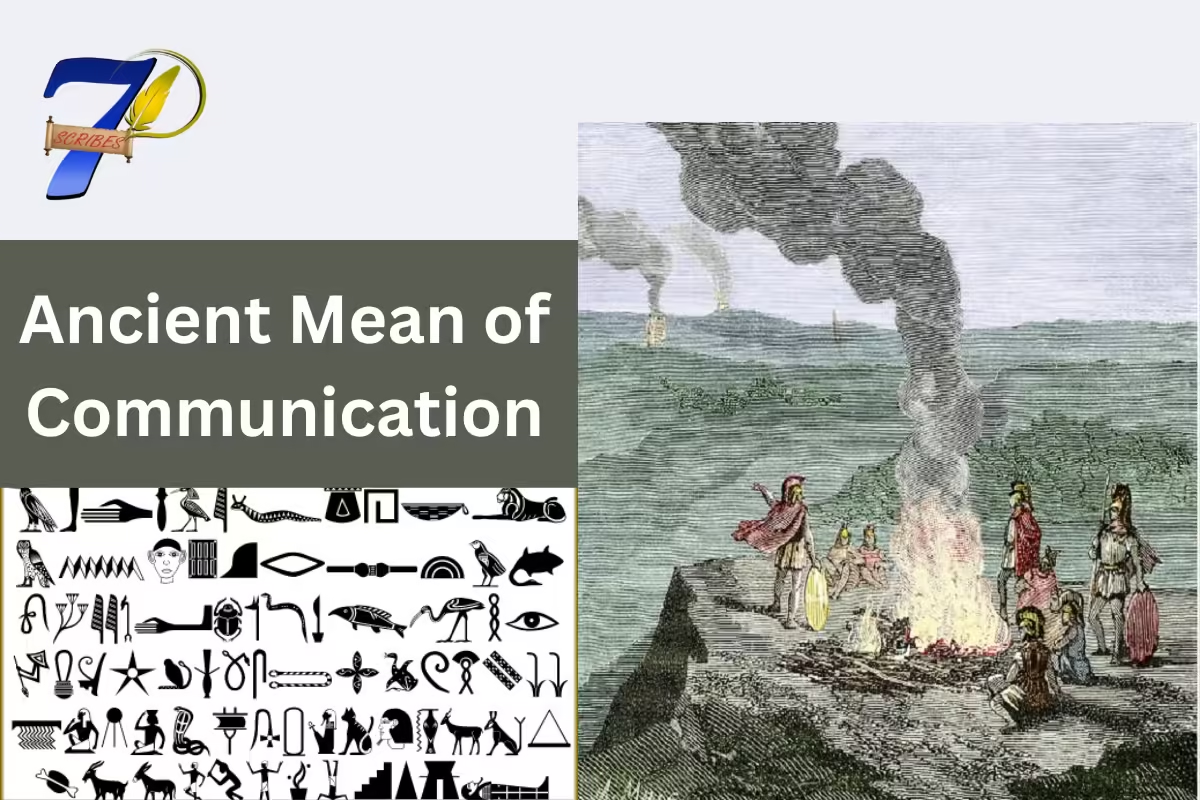
The earliest chapters in the history of communication began with gestures, sounds, and cave paintings before writing existed. At that time, writing and languages were not developed, and humans relied on non-verbal methods to communicate with each other.
Gestures and Body Language:
Early humans used hand signals, body postures, and facial expressions to convey basic pieces of information like fear, hunger, anger, and safety.
This is the only way to exchange basic information. It helps humans to survive at a time when no language or writing is developed.
Sounds:
Burning fires, cries, grunts, and other vocalizations were used to signal danger or call to action to important events like attacks from enemies, attacks by beasts, and also used when found foods, etc.
Cave paintings and symbols:
About 30,000 years ago, some of the first recorded attempts at communication came from cave paintings. These paintings, found in places like France and Lascaux, often depicted hunting scenes, animals, and human fingers, serving as a visual representation of early human life. They can be awarded as early attempts at visual communication.
Development of Languages:
The development of spoken languages marked a significant development or turning point in human communication. It is not possible to find when the first language was developed, but most experts believe that complex speech began evolving roughly about 100,000 years ago. Language allows early humans to share thoughts, ideas, and information easily for hunting, attacking, or defending from enemies. It transformed society towards development and peace.
The Invention of Writing Systems
The first writing system was developed around 5000 years ago. It was the biggest and most significant milestone in human communication history. It allows people to document their thoughts, store information, and transmit knowledge across time and space.
Sumerian Cuneiform (3200 BCE):
This first writing is called cuneiform, developed by the Sumerians of ancient Mesopotamia in 3200 BCE. This system used wedge-shaped marks pressed into clay tablets and was initially used for record-keeping, particularly related to trade and agriculture.
Egyptian Hieroglyphs (3000 BCE):
Around the same time (development of cuneiform), ancient Egyptians developed a language called hieroglyphics in 3000 BCE. This system consisted of pictorial writing used to record religious texts, royal decrees, and historical events.
Chinese Oracle Bone Script (1200 BCE):
In around 1200 BCE, the ancient Chinese used writing involving inscriptions on bones and shells for divination. This writing system is involved in the modern Chinese characters, which are still in use today.
Phoenician alphabet (1200 BCE):
Around the same time (development of Chinese Oracle Bone Script) in 1200 BCE, the Phoenicians created one of the first alphabets, a writing system where symbols represented sounds rather than whole words or concepts. This innovation made writing simpler and easily accessible, influencing the evolving communication history. It leads to the development of Greek and Roman alphabets.
Classical and Medieval Communication Systems
-
Greek and Roman Contributions
The Greeks and Romans made a significant contribution to communication history. The Greeks used their alphabets to store records of philosophical works, historical texts, and literature. Like Greeks, Romans also used Latin to document laws, political treaties, and scholarly works, some of which are still in use today.
The Greeks also contributed to the development of mass communication, particularly through the use of rhetoric and oration.
-
Manuscripts and Scrolls
In ancient and medieval times, manuscripts and scrooges became important mediums for storing information and knowledge. Monks in medieval Europe painstakingly copid religious and philosophical texts by hand, storing much of what we know about ancient civilizations.
-
The Messenger Systems:
Communication over long distances remains slow and labor-intensive throughout ancient and medieval history. The Romans and Persian Empires developed messenger systems to carry messages across vast distances. This allowed empires to quickly share messages across long distances and also maintain control over their territories.
The Printing Revolution: Gutenberg’s Printing Press

Invention of the Printing Press (1440)
No invention changed the history of communication more than Gutenberg’s press in 1440. This machine allows the mass production of pamphlets, books, and other written materials. It revolutionized the way of exchanging information through writing, making it more accessible than ever before. Gutenberg’s invention is often credited with sparking the Renaissance, Reformation, and the Scientific Revolution, as it allowed knowledge to spread rapidly across Europe.
The most positive impact of these devices is that they made books affordable, leading to an increase in literacy rates across Europe. The ability to mass-produce written works helped disseminate new ideas in science, politics, and religion
The Age of Telecommunications:

The next evolution in communication revolutionized the entire communication system. It cuts the distances, meaning allowing distance messages in a short time.
-
The Telegraph (1837):
In the 19th century, it emerged raised a new chapter in communication history. The telephone was invented by Samuel Morse. This device used Morse code to send messages over long distances via electrical signals. The Telegraph played a critical role in commerce, military communication, and journalism.
It facilitates not only sending long messages but also allows improvement in globalization, trade, military, and scientific research.
-
The Telephone (1876)
In 1876, Alexander Graham Bell invented the telephone, which further transformed communication. This device allowed people to talk directly with one another, eliminating the means of intermediates like the Telegraph operator. After a short time, it became an essential part of human life.
-
The Radio (1895)
In the 20th century, Guglielmo Marconi developed a radio that enabled wireless communication. By the 1920s, radio stations were broadcasting news, entertainment, and music to the public, shaping culture and politics.
The Digital Revolution
The modern era of communication history began with the internet, compressing millennia of progress into decades.
1. The Internet (1960s-present)
The first Internet was developed for the military in the 1960s, but it became accessible in the 1990s. The internet allows for the instant transmission of data, enabling a wide range of communication tools, from email to video conferencing. It changes the individual life, business, education, and social interactions.
2. Social Media (2000s-present):
Platforms like Facebook, Twitter, and Instagram have become dominant forms of communication, allowing people to share information and connect globally.

3. Mobile Communication
The rise of mobile phones, particularly smartphones, has made communication more accessible and convenient. Smartphones combine calling, texting, and internet access, making them essential tools for modern communication. With apps like WhatsApp and Zoom, mobile devices enable instant messaging, voice calls, and video conferencing, fostering global connectivity.
Conclusion: Communication in the 21st Century

This history of communication is a story of continual innovation. From primitive symbols to advanced digital networks, humans have developed increasingly different ways to share information. Each step in communication technology—from the printing press to the internet—has reshaped society profoundly. Today’s world is a global village; everyone from everywhere can communicate with anyone with the help of the internet. Also today we enter the era of artificial intelligence, virtual reality, and even quantum communication. The evolution of communication is far from over. Communication allows humans to interact and drives and fortifies economic growth, scientific development, bilateral relations between states, and cultural exchange.
Read More:

